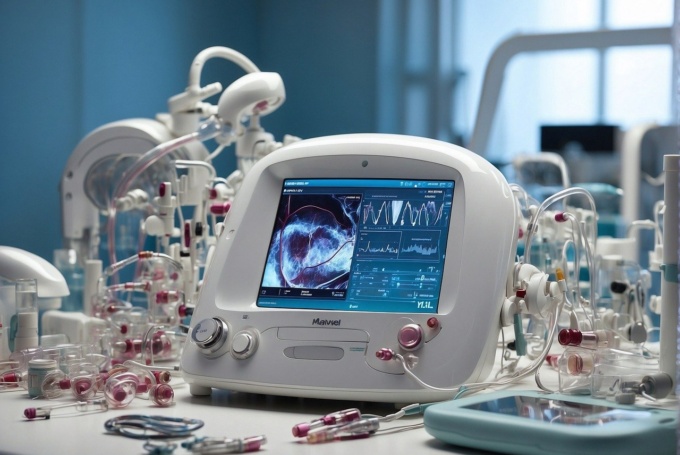From established corporate giants to innovative start-ups, our ‘Spotlight On’ series interviews senior executives across various life science industries, revealing the driving forces behind their company’s success. We delve into the visions and goals of senior executives from various companies, offering an exclusive opportunity to gain insight into the minds of industry leaders, as well as their organisations’ missions, objectives, and strategic goals.
SprintRay Inc. is a 3D Printer manufacturer focused on digital dentistry. The company’s products empower dentists to respond quickly to their patients and expand treatment offerings. In this interview, Consultant Tom Smith spoke with Senior Manager Regional DSO Mike Baker about his role within the company and upcoming plans for the team.
Watch the full interview here or read the transcript below:
Hi Mike, thanks for joining us today. Please, introduce yourself.
I started in a medical field for a little bit, but then in 2005, a friend introduced me to the dental world and started selling, the Sarek machine with Patterson and became a Branch Manager there and got the opportunity to sell an awful lot of technology at Patterson and Shine and most recently it’s SprintRay. I’ve been in this industry now for, you know, close to 20 years.
You know, there are some fantastic people in this industry for sure. But this year, it’s been a different and difficult year for a lot of people. How have you found the current market this year?
Yeah, it’s been a very interesting market. You know, you’ve got an awful lot happening with macro factors: the cost of money, the rise on the DSO side of multiples and then, what the industry is seeing is just a shortage of people. I think those big things kind of affect, everything else that’s going on in our industry.
Starting particularly in the 3d print space, which we’ll go on to shortly, but I just want to get your thoughts on this since you’ve been in the market for 20 years – how has everything adapted and where do you see it going and continuing?
Yeah, there’s no better time to be in the market than right now. I mean, I’m optimistic. When I got started, you know the only thing to talk about was CEREC and then for the next 10 years it was CEREC, but you look at the technology that’s all around us now in the dental industry and it’s just amazing – new stuff comes out all the time: intraoral scanners which used to be 40, 000 or down to 18, 000, combing for 55, 000. We’ve got AI now helping us with, you know, patient charts, 3d printing – you can take care of a patient on the same day. There’s just so much technology in space for everybody to look at. It’s like no other time that we’ve seen. The technology that’s on offer now is phenomenal.
I’ve seen clips of the 3D printers working and how quickly they can produce materials and resins and products is incredible. You’ve been a huge part of the DSO space, which is certainly a heavily growing area now. How important is that space?
I think it’s really important It continues to grow and grow and I know it will continue to grow you know, there’s still an awful lot of money for M&A in this so we know it’s going to continue. I think the challenge that a lot of manufacturers face is, this is a different business, you know, space is a different business. I think 3 things are a challenge. It’s really hard to get to the right people inside of a DSO and get to those decision-makers. There are so many people involved with each decision that the whole process can be complex and the ability to incorporate this technology is not necessarily there. Um, you know, there’s, there’s a few out there that are very large that have their teams to do this, but everybody else, they need the help of the manufacturer. So, if the manufacturer is not ready and prepared to take that on, you got to kind of wait and, and wait till you’re in a place to, to do that. So yeah. You need, your distributor to come in and help you. And you’ve got to work hard with them to, uh, to make it happen.
How big do you think the space will grow? Do you think it will start to take over?
Yeah, that’s, uh, that’s the million-dollar question. It’s like, how long is a piece of string, right? It’s, uh. It’s hard to say. I think it’s going to, you know, it’s not going to completely take over the industry. I mean, becoming a dentist and having your practice is still one of the greatest roles, that a dentist can get coming out of school.
You know, there’s still that ability to kind of have that authority and autonomy and do your own thing. So, I don’t know, maybe, maybe 45, 50 per cent market.
Well, that is still a large share, especially compared to where it was years ago when DSLs weren’t a huge, huge part of the industry to get to that. That would be incredible. Yeah, sometimes I’m a little too optimistic for my own, but that’s the number I’ll throw out there, Tom.
How have you seen the adaptations over the last couple of years since being at the start of SprintRay to where you are now?
Yeah, it’s been very impressive to see the adaptation into the market. You know, when I first got to SprintRay, there were some, some big holes that need to be filled. And one of the holes was, you know, how do you design these things? It was just a piece of hardware going into an office and then they had to figure everything out. And, um, you know, with the design capabilities 3d printer companies, but now you’re seeing. A lot of other companies jump in and, and help in that regard. And then, you know, the adaptation of the intraoral cameras or the inner oral scanners, merging with the 3D companies and creating those, those links. Things have gotten easier and easier. On the flip side, the materials coming out have just been amazing. I mean, there’s a ceramic crown material out. Now you’re seeing a material that is coming out in the ortho space. They’re, they’re getting there. I don’t think they’re quite ready for prime time yet, but they’re certainly close. And then on the denture side of things, a lot of new materials. So, they’re covering all bases now.
There are talks of implants being made by 3D printers; do you think that will ever get to that stage?
Yeah, I think when you look outside of dentistry and see how far 3D printing has gone in industry, and manufacturing, it’s really impressive what they’re doing with 3d printers. And so I think it’s just a matter of time until it comes into our space and dentistry. I do think you’re going to see, you know, over 60 per cent adoption of the 3d printer and in any practice. I mean, just for models alone, every practice, they make models, and you can do it with your 3d printer and get rid of the dust and all the mess in the back room there. I see the growth. You know, over the next 5 to 10 years to be a long, long runway.
With 3D printing, you’ve got both the clinical and lab side of things. Both are very different markets, as you’re aware. How do they compare and which one’s currently bigger than the other?
Yeah, I think the lab side is, is bigger right now in terms of adoption. You know, you’ve got a shrinking number of labs and, and, um, I think labs, it was a necessity for a lab to jump into the 3D printing space than it has been on the, on the clinical side. And there’s an awful lot of technology already in the lab space with milling and that. So this was a natural adoption, and they’ve got more time to devote to it, more time to learn it and become experts at it. And they have done that. You’ve got so many big, big companies with fast printers in the lab space and, you know, now we’re getting into automation on the lab side of things. It’s really, impressive. I think, you know, when you, when you talk about the, the adoption to 3D printing in the clinical space, I think 3D printing is just run into the same issue as a lot of other technology and a lot of other new things in dentistry. Which is back to that macro thing of a shortage of people, a shortage of qualified people.
SprintRay no doubt is 1 of the biggest, if not the biggest name within 3D printing and dental, and there are a lot of start-up companies coming into play. What do you think the challenges that they’re facing at the moment?
Yeah, that’s a great question. So I think, yeah, name recognition is one of those challenges. Well, I think we rode the coattails of form labs to, to kind of create the industry and, you know, we obviously have pumped an awful lot of energy into creating a brand. And made a made a name for SprintRay, I think, you know, that’s one of the challenges that other companies are going to have is the name, is the material. Unless you have the R& D budget to focus in on these dental materials, I think it’s a challenge there, you know, I don’t think so much on the design side. As I said, there are so many third parties design folks, but then it’s just choosing which path you’re going to go. Are you going to go the distribution path where you’re going to leverage what the distribution channel has or do you try and go direct, which can be a challenge?
If you were leading a company, would you rather go down that distribution channel or the direct channel?
Yeah, I think it’s the distribution channel. There’s so many more relationships there. There’s so much more sales people and service people in the market and I think the distribution channel has done a nice job of creating this training resource that everybody needs because it’s technology.
For anyone that’s coming into the industry that might be new and unaware of how it works, do you have any tips for them on how to succeed coming into the dental market?
Yeah, I think, you know, the easiest thing to do is just kind of look at the folks that have gone before and been successful. There are a lot of rock stars out there in the industry on the clinical side. You know, if you go spend some time with them there’s, there’s so many resources out there. I would just spend a lot of time learning the technology and learning what it can do. And, um, you know, kind of immerse yourself in it and become an expert.
To find out more about about SprintRay, take a look at their website. Looking for help with your recruitment? Book a consultation with one of our consultants. Or looking for an exciting new career opportunity? Browse our jobs page, or register your CV with us. You can find other interviews with senior leaders in the space over on our blog channel.




